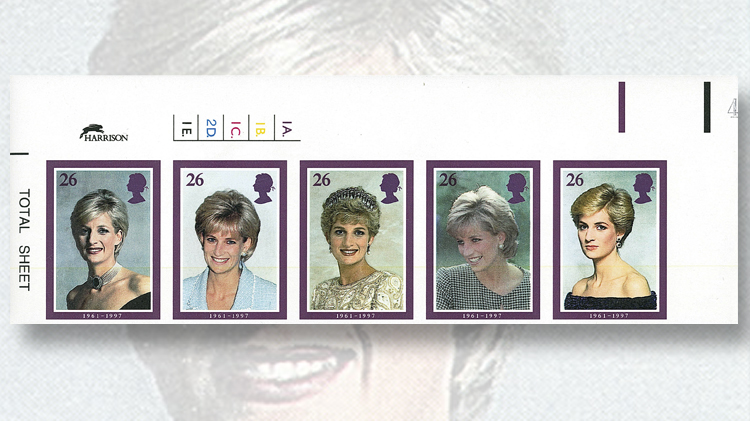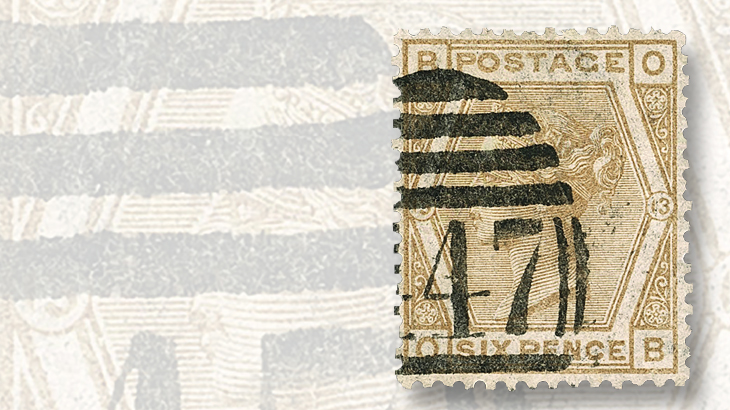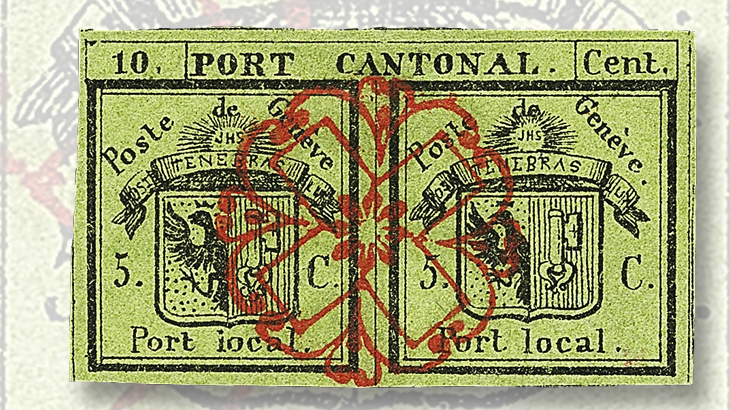Auctions
Double Geneva, British rarities among upcoming Siegel offerings
By Michael Baadke
Robert A. Siegel International, in association with Charles F. Shreve, will conduct a four-day auction of worldwide stamps, postal history, and collections April 25-28.
The sale will take place beginning at 10:30 a.m. Tuesday at Siegel Auction Galleries, on the fourth floor at 60 E. 56th St. (Park and Madison), in New York City.
Below is an in-depth preview from Charles F. Shreve, the Director of International Siegel Auctions.
Siegel reports that the sale includes an advanced worldwide estate collection cataloging millions of dollars, with extensive British Commonwealth and Great Britain, a large holding of sheets from Egypt, all periods of China, and sets and singles of Europe and colonies.
Most lots are offered without reserves.
Connect with Linn’s Stamp News:
Sign up for our newsletter
Like us on Facebook
Follow us on Twitter
Among the many standout items in this sale is a used example of one of the world’s earliest stamp issues: the lithographed 1843 Double Geneva, a 10-centime (5c+5c) black on yellow green (Scott 2L1), the first issue of the Swiss cantonal administration.
The unusual configuration of two 5c stamps side-by-side is explained in the 2010 book The Philately of Switzerland, edited by Richard T. Hall: “One half could be used for local postage, within the district of the local post office. The two halves combined could be used for postage anywhere in the canton.”
Philatelic expert Sergio Sismondo examined this issue in his Unveiling Classic Stamps column in the April 17 Linn’s Stamp News monthly magazine, noting that philatelists estimate that some 90 percent of the stamps printed were split for local use.
The intact example offered in this auction is described by Siegel as one of the finest known.
“The vast majority of Double Geneva stamps are cut in on at least one side and/or have faults. This example is the rare exception. … Its large margins, beautiful color, proof-like impression and perfect cancel all combine to make this one of the most eye appealing copies in existence.”
The stamp is neatly and fully struck with a clean red Geneva Rosette cancel and is accompanied by a 2009 von der Weid certificate. It is listed with the $42,500 value for the used stamp found in the 2017 Scott Classic Specialized Catalogue of Stamps and Covers 1840-1940.
The opening session of the sale on Tuesday morning begins with more than 125 lots of Great Britain, including classic issues, Queen Elizabeth II, offices abroad, and other back-of-the-book.
This group offers an example of the stamp known as the “abnormal” 6-penny buff from Great Britain’s 1873-80 series (Scott 63).
The 6d stamp as normally issued is printed in gray (Scott 62), but the buff variety was created from plate 13 proof sheets, according to the Scott Classic Specialized catalog.
“This stamp was accidentally released for sale when a few imprimatur sheets in Buff were perforated and mixed with normal inventory,” Siegel explains, adding that 20-30 examples are believed to exist, all of which are used, and most suffering faults.
“Few can compare to the quality of the stamp offered here,” Siegel notes.
The typographed stamp is struck with part of the Leeds “447” duplex cancel, and is lettered “O-B” in the lower corners. A 2015 B.P.A. Expertising Limited certificate identifies the stamp as genuine, and it is listed by Siegel with the $25,000 Scott catalog value.
The sale also offers a particularly striking modern error from Great Britain: the 26p Princess Diana memorial issue as an imperforate se-tenant, top-margin, cylinder-number strip of five.
The set of five perforated 26p stamps featuring different portraits of the Princess of Wales was issued Feb. 3, 1998, about five months after she died at age 36 in a devastating automobile crash in Paris.
The imperforate strip of five memorial stamps is identified in the Scott Standard Postage Stamp Catalogue as Great Britain Scott 1795b, and listed with a dash in place of a value, which indicates that “information is either lacking or insufficient for purposes of establishing a usable catalogue value,” according to the catalog introduction.
Siegel states that the error is one of the rarest of all from the British modern era, with only six strips recorded. The example in this auction is the unique position piece with “Harrison” and cylinder number imprints, unused with full original gum, according to the 1999 David Brandon expertising certificate.
The auction listing notes the British Stanley Gibbons catalog value of £25,000, which converts to roughly $31,200.
More than 200 collections and accumulations will be offered during the final two auction sessions, which take place Friday.
The auction catalog can be viewed online here, with a PDF version also available for downloading or viewing.
Online bidding options are available on the Siegel website.
Additional information is available from Robert A. Siegel Auction Galleries, 60 E. 56th St., Fourth Floor, New York, NY 10022.
Siegel to sell recovered Jenny Invert in May
Robert A. Siegel Auction Galleries of New York City will auction the United States position 76 24¢ Jenny Invert airmail error stamp during a series of sales taking place May 9-11.
The rare single stamp, formerly part of the McCoy block of four stolen in 1955, was recovered in 2016 and returned to its rightful owner, the American Philatelic Research Library in Bellefonte, Pa. The library, which also owns a second stamp from the stolen block, recently selected Siegel to handle the sale of the Position 76 example. A report about the library’s plans to auction the stamp was published on page 1 of the April 10 Linn’s Stamp News.
The McCoy Inverted Jenny sale is scheduled with sales offering the Dr. Deane R. Briggs, M.D., collection of Florida in the Civil War; the Steven Walske collection of North American blockade run mail and French royal packet mail; and the Vaquero collection of U.S. essays and proofs.
MORE RELATED ARTICLES
Headlines
-
US Stamps
Oct 7, 2024, 12 PMVasiliauskas named president of Mystic Stamp Co.
-
US Stamps
Oct 6, 2024, 5 PMApgar souvenir card available
-
US Stamps
Oct 6, 2024, 4 PMFirst Continental Congress and U.N. stamps receive Scott catalog numbers
-
World Stamps
Oct 5, 2024, 1 PMCanada Post continues Truth and Reconciliation series











